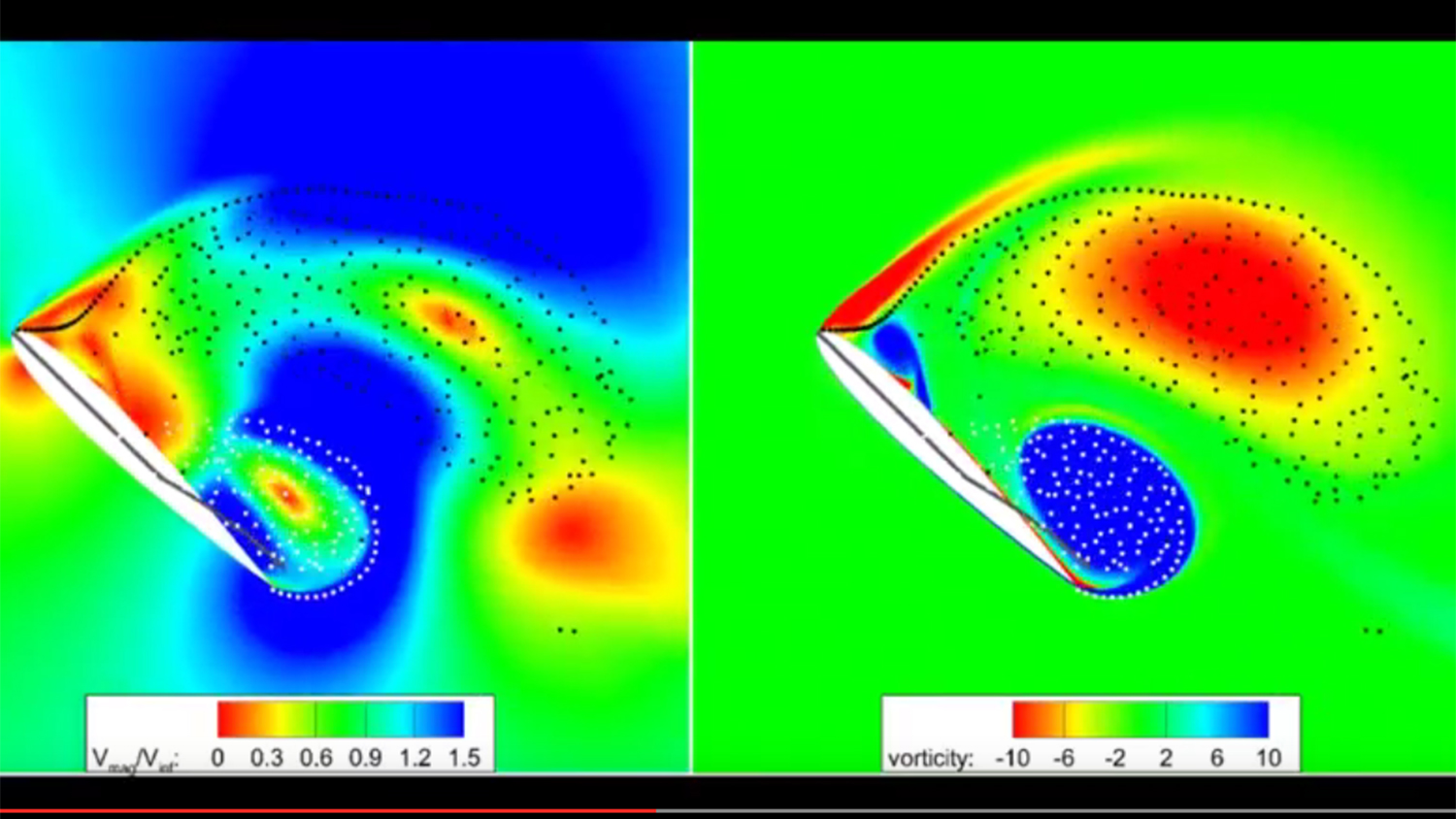First place for video among graduate students and postdocs goes to Tyler Allen, a Ph.D. student in NC State’s Comparative Biomedical Sciences program, for the glowing video he titled “Heart of Gold,” showing how researchers study zebrafish hearts for their potential to help humans with heart diseases. (The video can be seen at the top of this post.)
“This video displays the beating heart of an embryonic zebrafish,” Allen says. “The video was captured in real time with the heart (red) pumping red blood cells (blue) through its chamber. This zebrafish was genetically modified so that both the heart and red blood cells would fluoresce with distinct colors, allowing for the unique visualization of this intense process.
“This work is important because heart disease is the leading cause of death worldwide, affecting millions of people each year,” Allen explains. “Studying how the heart works and understanding the injury process is key to developing therapies. Using zebrafish as a model to study heart disease is a promising endeavor, especially since – at the embryonic stage – the zebrafish heart has regeneration abilities that far surpass the human heart. A better understanding of how the heart of a zebrafish can regenerate will lead to the development of cures for devastating heart diseases in humans, saving countless lives.”
Second place goes to Shreyas Narsipur, a postdoctoral researcher in the Department of Mechanical and Aerospace Engineering, for a video of a low-order model that can reduce the time needed to obtain a simulation in aerodynamic design from 26 hours to 30 seconds.
“Unsteady aerodynamics research has gained significant popularity in the aerodynamic community due to its applications in a wide range of areas,” Narsipur says. “While experimental and computational studies have helped understand the flow physics of unsteady motions, practical application of these methods for rapid design and analysis purposes is restricted due to increased cost and time, thereby necessitating the development of low-order methods. Recently, a low-order model (LOM) was developed for rapid prediction of incompressible flows over unsteady airfoil motions.
“The LOM presented here can be used to improve design procedures during the development stages of wind turbine blades, micro air vehicles, and flow-energy harvesting devices to come up with more efficient designs. The LOM also has the capability of being applied to auto-pilot systems in helicopters to predict and prevent dynamic stall, thereby increasing the flight safety and flight operation envelope.
“My video shows the contour plots of velocity magnitude (left) and vorticity (right) from computational simulations co-plotted with the decambering line to model trailing-edge flow separation (gray line), discrete leading-edge vortices (black circles), and discrete trailing-edge vortices (white circles) calculated by the LOM for a NACA 0012 airfoil undergoing a 0-45-0 degrees pitch motion about the leading-edge,” Narsipur says. “While the computational simulation took approximately 26 hours, LOM predictions were obtained within 30 seconds.”
No video award was given for faculty/staff.
Note: You can find the work from winners in all of the research image contest categories here.
- Categories:



